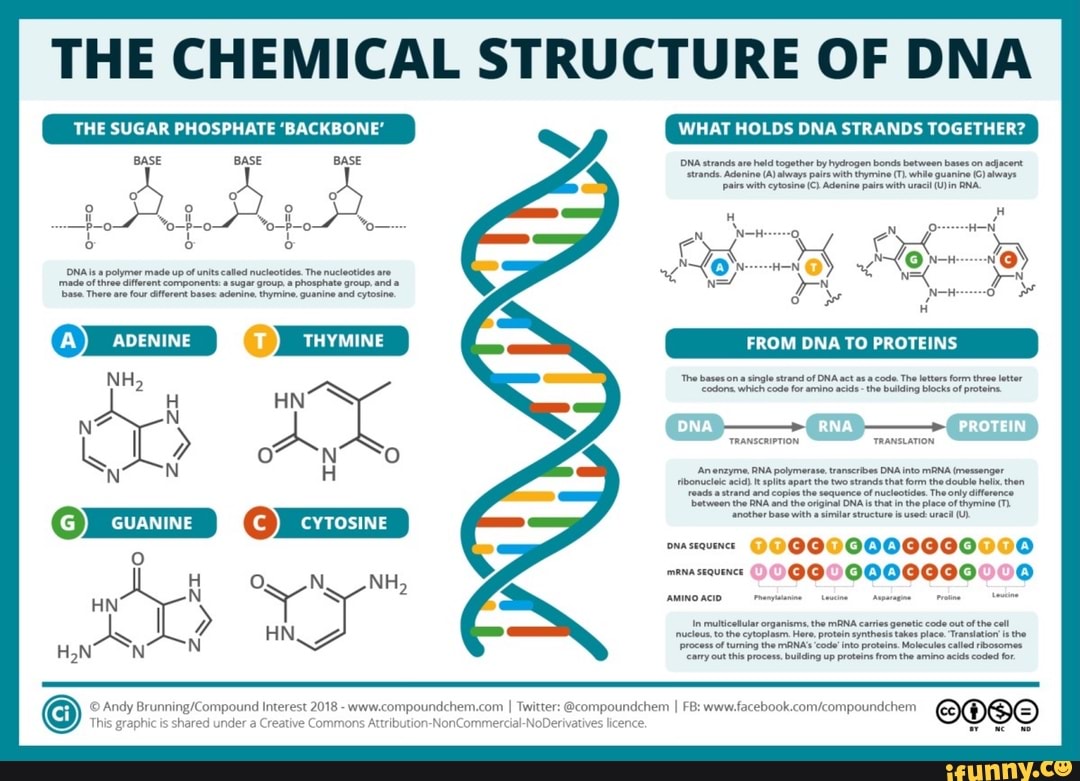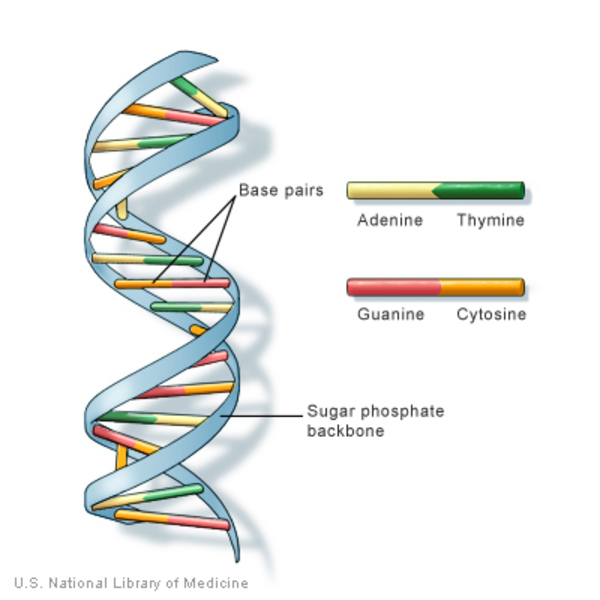

Molecular biologists have named several kinds of RNA on the basis of their function. However, they do not contain thymine, which is instead replaced by uracil, symbolized by a “U.” RNA exists as a single-stranded molecule rather than a double-stranded helix. RNA nucleotides contain the nitrogenous bases adenine, cytosine, and guanine. ( Figure 9.4).įigure 9.5 The difference between the ribose found in RNA and the deoxyribose found in DNA is that ribose has a hydroxyl group at the 2' carbon. The diameter of the DNA double helix is uniform throughout because a purine (two rings) always pairs with a pyrimidine (one ring) and their combined lengths are always equal. The two strands are anti-parallel in nature that is, one strand will have the 3' carbon of the sugar in the “upward” position, whereas the other strand will have the 5' carbon in the upward position. Adenine and thymine are connected by two hydrogen bonds, and cytosine and guanine are connected by three hydrogen bonds. This is the basis for Chargaff’s rule because of their complementarity, there is as much adenine as thymine in a DNA molecule and as much guanine as cytosine. In other words, adenine and thymine are complementary base pairs, and cytosine and guanine are also complementary base pairs. Base-pairing takes place between a purine and pyrimidine: namely, A pairs with T, and G pairs with C. Watson and Crick proposed that the DNA is made up of two strands that are twisted around each other to form a right-handed helix, called a double helix. In its natural state, each DNA molecule is actually composed of two single strands held together along their length with hydrogen bonds between the bases. The phosphate group is attached to the 5' carbon of one nucleotide and the 3' carbon of the next nucleotide. The carbon atoms of the five-carbon sugar are numbered clockwise from the oxygen as 1', 2', 3', 4', and 5' (1' is read as “one prime”). The sugar–phosphate groups line up in a “backbone” for each single strand of DNA, and the nucleotide bases stick out from this backbone. The phosphate group of one nucleotide bonds covalently with the sugar molecule of the next nucleotide, and so on, forming a long polymer of nucleotide monomers. (b) Cytosine and thymine are pyrimidines. In 1962, James Watson, Francis Crick, and Maurice Wilkins were awarded the Nobel Prize in Medicine for their work in determining the structure of DNA.įigure 9.3 (a) Each DNA nucleotide is made up of a sugar, a phosphate group, and a base. This meant they were always paired in some way. Chargaff had shown that of the four kinds of monomers (nucleotides) present in a DNA molecule, two types were always present in equal amounts and the remaining two types were also always present in equal amounts. Watson and Crick also had key pieces of information available from other researchers such as Chargaff’s rules.

Watson and Crick were able to piece together the puzzle of the DNA molecule using Franklin's data ( Figure 9.2). In Wilkins’ lab, researcher Rosalind Franklin was using X-ray crystallography to understand the structure of DNA. The patterns give important information about the structure of the molecule of interest. X-ray crystallography is a method for investigating molecular structure by observing the patterns formed by X-rays shot through a crystal of the substance.

Pauling had discovered the secondary structure of proteins using X-ray crystallography. Other scientists, such as Linus Pauling and Maurice Wilkins, were also actively exploring this field. In the 1950s, Francis Crick and James Watson worked together at the University of Cambridge, England, to determine the structure of DNA. Describe how eukaryotic and prokaryotic DNA is arranged in the cell.Learning Objectives By the end of this section, you will be able to:


 0 kommentar(er)
0 kommentar(er)
